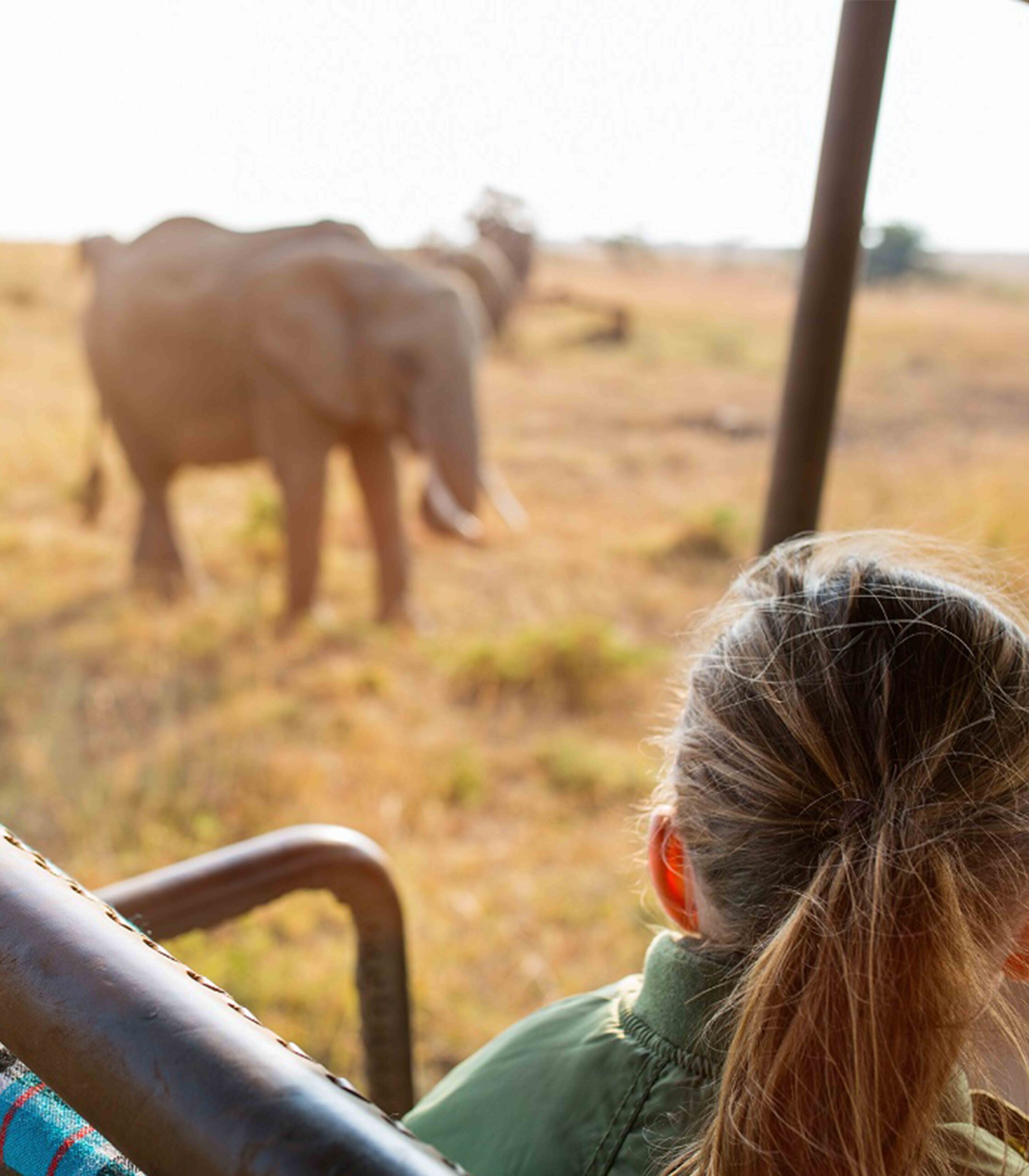
Wildlife Tourism 野生動植物主題旅遊概論
旅遊業被廣泛認為是世界上最大的商業企業,涉及數千萬員工和數億客戶。
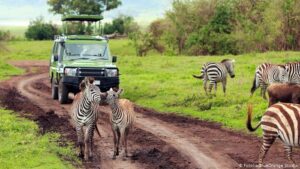
最近的估計表明,每年進行多達7億次國際旅行,而國內旅遊可能要比這個數字大一個數量級。很簡單,人們真的很喜歡旅行。當許多人去探望後代,祖父母,親戚或朋友時,許多人則去探訪異國風情的地方,在那裡野生生物可以通過新的體驗,印象和情感刺激他們。野生動物旅遊業是旅遊業現象的一個專門方面,但至為重要。在考慮人們為什麼喜歡看野生動物時,以歷史觀點來看可能會有所幫助。畢竟,只有一兩代人以前,我們大多數的父母和祖父母幾乎每天都看到許多野生動物,甚至還有更多的馴養動物。就在100年前,我們的星球上的人口只有今天的四分之一,而大城市卻很少。農村地區普遍存在野生動物,成群的鳥類如此密集以至於使天空變暗,成群的羚羊在稀樹草原上遷徙,魚群如此濃密,以至於在某些地方,海洋看起來像生命一樣堅固。
如今,大自然的景象主要在電視上看到,電子產品已成為許多人“體驗”世界野生動植物資源的標準媒介。儘管付出了一定的真實性代價,但這卻使人們以一代人以前不可能的方式向世界展示了生物多樣性的圖像。在過去,人們常常對當地的野生動植物非常熟悉,對世界上其他地方的動物只有淡淡的了解。如今,人們很少會看到除了鴿子和麻雀這樣的常見物種以外的野生動物,但他們可能對樹袋熊,大白鯊,老虎,大熊貓,火烈鳥,巨型水獺,遷徙的馴鹿等的生活方式非常熟悉。儘管從任何物理意義上講本質上都與自然脫節,但人們在精神上可能至少比以往任何時候都更了解野生生物的某些方面。到動物生活並可以照常觀看的地方旅行,可能為我們的祖先體驗虛擬現實提供了一個重要的機會,使虛擬現實更接近於現實。一旦人們在野外看到了一個物種,就可以在電視或電影院上觀看甚至是卡通形式的更詳細的圖像時,其含義也將完全不同。
Tourism is widely considered to be the world’s largest business enterprise, involving tens of millions of employees and hundreds of millions of customers. Recent estimates suggest that as many as 700 million international trips are taken each year, and domestic tourism may well be an order of magnitude larger than that. Quite simply, people really do like to travel. And while many travel to visit offspring, grandparents, in-laws, or friends, many others travel to visit exotic places where wildlife can stimulate them with new experiences, impressions, and emotions.
Wildlife tourism is a specialised, yet supremely important, aspect of the tourism phenomenon. When thinking about why people like to see wildlife, it is perhaps helpful to take an historical perspective. After all, only one or two generations ago most of our parents and grandparents saw many wild animals virtually every day, and even more domesticated ones. Just 100 years ago, our planet had only about a quarter as many people as it has today, and large cities were few and far between. Wildlife was ubiquitous in the countryside, with flocks of birds so dense they darkened the sky, teeming herds of antelope migrating across the savannas, and schools of fish so thick that in some places the sea seemed solid with life.
Today, the vision of bountiful nature is seen mostly on television, and electronics has become the standard medium for many people to ‘experience’ the world’s wildlife resources. This exposes people to images of the world’s biodiversity in ways that were impossible a generation ago, though at some cost of authenticity. In former times, people often were intimately familiar with their local species of wildlife, and aware only dimly (if at all) of the strange beasts that occupied other parts of the world. Today, people may seldom see a wild animal other than commensal species like pigeons and sparrows, yet may be intimately familiar with the lifestyles of koalas, great white sharks, tigers, giant pandas, flamingos, giant otters, migrating caribou, and on and on. Though essentially out of touch with nature in any physical sense, people may be more connected mentally than ever before to at least some aspects of wildlife. Tourism to places where animals live and can be seen behaving as they always have may offer an important opportunity for bringing virtual reality closer to the reality as our ancestors experienced it. Once a person has seen a species in the wild, watching more detailed representations on the television or at the cinema, even in cartoon form, takes on quite a different meaning.
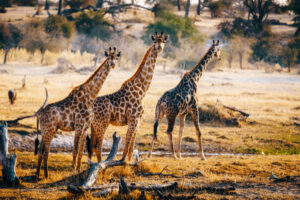
野生動植物旅遊業面臨的挑戰更加重要,因為現在全球一半的人口居住在城市中,而且他們與野生動物的關係仍然遙不可及,甚至幾乎是神話般的。但是野生生物旅遊業為城市居民提供了與自己的野生自然重新聯繫的機會,當獵豹在塞倫蓋蒂平原上划痕以追趕逃離的牛羚時,或在珊瑚梭子魚學校中潛水時,會感到極度興奮。蘇拉威西島沿海的珊瑚礁,或在落基山脈自由流動的山間溪流中釣鱒魚,或觀看成群的五顏六色的鸚鵡在亞馬遜雨林上飛過翅膀。儘管大多數城市居民可能對沒有現代便利的製冷,電力和幾乎無限量的信息的生活恢復生活不感興趣,但他們中的許多人都在花費時間和金錢為至少暫時返回大自然而投票,並且參觀世界上僅存的最後的野生地區,享受野生動物旅遊。並非巧合的是,由於過去40年來世界人口翻了一番,受到法律保護的野生動植物棲息地幾乎已增長了三倍,現在佔地球陸地表面的近12%。這些保護區中的許多甚至大部分都是專門為吸引國內外遊客而設計的。的確,可以說服野生動物旅遊業是鼓勵政府採取必要措施保護世界生物多樣性的重要刺激手段。
此外,野生動植物旅遊業為希望將野生動物保留在其土地上的土地所有者提供了一些重要的經濟機會。私人自然保護區為世界許多地方的政府保護區提供了有益的補充。在許多其他情況下,建立野生動植物保護區正在給周圍的土地帶來根本變化,增加服務業和零售業的就業比例,同時大大減少對自然資源的消費。這種經濟變化並不總是能完全順利地實現,但是在世界許多地方已經清楚地表明,與娛樂相關的就業機會可能是同一地區資源開發方面的就業機會的五倍以上,而總的經濟利益卻是通常大於十倍。
所有這些都是長篇大論的方式,它強調野生動植物旅遊這一主題的重要性,既是一種現象本身,又是向政府表明我們人民希望我們的野生生物遺產繼續為人們所用的一種手段。繁榮。我們珍視大猩猩,大熊貓,犀牛和大象的生存權,因此,我們也有一天可能希望擁有一種令人難忘的經歷,即被一頭大象衝動,或在一群靜息的大猩猩中安靜地行走,或放下一隻用西班牙獵狗沖洗過的環頸野雞。
對於保護野生動植物或旅遊業的人,這本書為任何對野生動植物感興趣的人提供了寶貴的主要參考。它匯集了來自各個學科的研究成果,首次提供了有關野生動植物旅遊問題的詳細彙編和綜合資料。基於三重底線可持續性的概念,它可以幫助我們了解如何更好地利用這一新興產業來養育人與自然界之間持續不斷的親密關係,即使我們中的某些人有時會在水泥叢林中孤立自己我們不是野生動物遊客。
The challenges of wildlife tourism are even more important because half of the world’s population now lives in cities, and their relationship with the wild remains distant, even almost mythical. But wildlife tourism provides urban people a chance to get back in touch with their own wild nature, feeling an atavistic thrill when a cheetah streaks across the Serengeti Plain in hot pursuit of a fleeing wildebeest, or scuba diving among a school of barracuda in the coral reefs off the coast of Sulawesi, or casting for trout in a free-flowing mountain stream in the Rockies, or watching flocks of colourful parrots taking wing above the Amazon rainforest. While most urban dwellers may not be very interested in returning to a life without the modern conveniences of refrigeration, electricity, and virtually unlimited amounts of information, many of them are voting with their time and money for at least a temporary return to nature, and visiting the world’s last remaining wild areas to enjoy wildlife tourism. It is no coincidence that, as the world’s population has doubled over the past 40 years or so, the area of wildlife habitat given legal protection has almost tripled, and now amounts to nearly 12% of the land surface of our planet. Many, even most, of these protected areas are designed especially for appealing to tourists, both domestic and foreign. Indeed, a convincing argument can be made that wildlife tourism has been an essential stimulus for encouraging governments to take the measures necessary for conserving the world’s biodiversity.
What is more, wildlife tourism is providing some significant economic opportunities for landowners who would like to retain wild animals on their land. Private nature reserves are providing useful complements to government-protected areas in many parts of the world. In many other cases, establishing protected areas for wildlife tourism is bringing fundamental changes to the surrounding lands, increasing the proportion of employment in the service and retail sectors while significantly reducing the exploitation of natural resources for consumptive uses. Such economic changes do not always come about entirely smoothly, but it has been clearly demonstrated in many parts of the world that recreation-related employment can be more than five times greater than employment in resource exploitation in the same territory, and gross economic benefits are often more than ten times greater.
All of this has been a rather long-winded way of emphasising how important is the topic of wildlife tourism, both as a phenomenon in its own right, and as a means of demonstrating to governments that we the people want our wildlife heritage to continue to prosper. We value gorillas, pandas, rhinos and elephants both for their own right to exist and so that we, too, may some day hope to have the unforgettable experience of being charged by a bull elephant, or walking quietly among a group of resting gorillas, or bringing down a ring-necked pheasant flushed by a spaniel at point.
This book provides an invaluable primary reference for anyone with a serious interest in wildlife tourism – whether from a conservation or tourism perspective. Bringing together research from a wide range of disciplines, it provides the first detailed compilation and synthesis of wildlife tourism issues. Building on the concept of Triple Bottom Line sustainability, it helps us to understand how we might better use this emerging industry to nourish a continuing intimate relationship between people and the rest of nature, even as some of us isolate ourselves in concrete jungles during the times we are not being wildlife tourists.
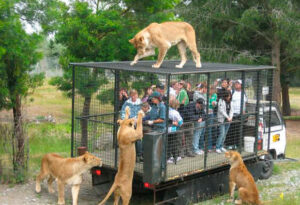
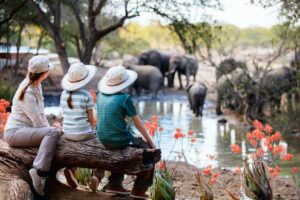

野生動植物旅遊簡介
凱倫·希金波特(Karen Higginbottom)
野生動物旅遊業被認為是在支持野生生物保護和當地社區的同時確保可持續經濟利益的一種方式(例如Shackley 1996,Fennell和Weaver 1997,Ashley和Roe 1998,Manfredo 2002)。但是,實現這一目標的效果如何?為實現這一願景需要做些什麼?本書探討了野生動植物旅遊的積極和消極影響,並為其設計,規劃和管理提供了指導。在本介紹性章節中,我們對野生動植物旅遊業進行了定義和分類,為野生動植物旅遊業的規劃和管理提供了框架,並解釋了野生動植物旅遊業為何如此重要。本章的最後部分提供了本書的原理和大綱。
以遊客與野生動物互動為基礎的旅遊業吸引了政府,旅遊業和研究人員的越來越多的興趣。經驗的類型是多種多樣的。其中包括在珊瑚礁上進行水肺潛水,在非洲進行野生動植物之旅,從船上或陸地上觀鯨,獨立或與商業嚮導觀鳥,在國家公園散步時發現動物,與ecoresort呆在一起鄰近的野生動植物,參觀動物園或野生動植物保護區,大型獵物捕撈和狩獵獎杯。所有這些旅遊活動以及許多其他活動都以野生動物為主要或重要組成部分。儘管最近國際旅行受到了挫折,但這種經驗越來越成為有組織旅遊的一部分,被廣泛認為是一種增長型產業,並為許多國家的經濟做出了重大貢獻(WTTC 2000)。
儘管所有野生動植物旅遊產品或體驗的唯一特徵是它們都包含野生生物元素,但作為一種獨特的旅遊類別,對野生動植物旅遊的標籤和討論正變得越來越普遍。近年來,已經建立了許多組織和倡議來特別關注自由放養的野生生物,例如美國的國家可觀察野生生物計劃和美國的州野生生物觀賞計劃(Pierce and Manfredo 1997,USDA Forest Service 2003)。這是蘇格蘭“旅遊與環境論壇”發起的一項野生動植物旅遊倡議,並成立了澳大利亞野生動物旅遊局(有關詳情,請參閱第13章)。出現了針對從業者的野生動物觀賞手冊(尤其是Richie Oberbillig 2000)以及針對休閒主義者和遊客的指南和視頻(例如Duda 1995; Case and Associates 1995; Bennett等人2000和31美國的州野生動物觀賞指南,可通過Watchable Wildlife,Inc.獲得)。 2003)。現在有幾所大學的課程中包括野生動植物旅遊主題(例如,西悉尼大學和澳大利亞的詹姆斯·庫克大學,以及美國的中央湖學院)。已經建立了提供商品以支持野生動植物觀賞的企業(例如,野生動植物觀賞用品2003)。
對野生動植物旅遊業的關注似乎反映了三個因素。首先,野生動植物管理專業人員和非政府野生動植物組織對在野生動植物保護與涉及野生動植物的旅遊之間可以產生協同作用的興趣日益濃厚(第6章)。第二,野生動物的使用越來越多一些國家(例如蘇格蘭:鳥類和海洋哺乳動物,印度:老虎;中國:大熊貓)的營銷人員作為推廣一般旅遊或自然旅遊的旗艦。這與第三個因素有關:與自然環境的其他因素相比,野生動物對許多遊客特別感興趣。我們不主張將野生動植物旅遊作為一個獨特的實體來促進,因為這是否值得取決於個人或組織的目標。但是,存在很多問題和利益相關者,特別是與基於野生動植物的旅遊相關的問題,值得進行系統和嚴格的評估。
Wildlife Tourism: An Introduction
Karen Higginbottom
Wildlife tourism has been heralded as a way to secure sustainable economic benefits while supporting wildlife conservation and local communities (e.g. Shackley 1996, Fennell and Weaver 1997, Ashley and Roe 1998, Manfredo 2002). But how well is it achieving this, and what needs to be done to secure this vision? This book explores the impacts of wildlife tourism, both positive and negative, and provides directions for its design, planning and management. In this introductory chapter, we define and classify wildlife tourism, provide a framework for its planning and management and explain why wildlife tourism is important. The last part of the chapter provides a rationale and outline of the book.
Tourism that is based on visitors interacting with wild animals is attracting increasing interest from governments, the tourism industry and researchers. The types of experiences are diverse. They include scuba diving on a coral reef, going on a wildlife safari in Africa, whale watching from a boat or land, bird-watching either independently or with a commercial guide, spotting animals while walking in a national park, staying at an ecoresort with neighbouring wildlife, visiting a zoo or wildlife sanctuary, big game fishing and trophy hunting. All of these tourism activities, and many more, feature wild animals as the major or a significant part of the experience. And increasingly, such experiences are becoming part of organised tourism, widely considered a growth industry and contributing substantially to the economy of many countries (WTTC 2000), despite recent setbacks to international travel.
While the only feature shared by all wildlife tourism products or experiences is their inclusion of a wildlife element, labelling and discussion of wildlife tourism, as a distinct class of tourism, is becoming increasingly common. In recent years, a number of organisations and initiatives have been established to focus particularly on viewing of free-ranging wildlife, such as the National Watchable Wildlife Program and state wildlife viewing programs in the USA (Pierce and Manfredo 1997, USDA Forest Service 2003), a wildlife tourism initiative by the Scottish ‘Tourism and the Environment Forum’ and formation of Wildlife Tourism Australia (see Chapter 13 for details). Wildlife viewing handbooks for practitioners (especially Richie Oberbillig 2000) and guidebooks and videos for recreationists and tourists are appearing (e.g. Duda 1995; Case and Associates 1995; Bennett et al. 2000 and 31 USA state wildlife viewing guides available through Watchable Wildlife, Inc. 2003). Several universities now include subjects on wildlife tourism in their curricula (e.g. University of Western Sydney and James Cook University, Australia and Central Lakes College, USA). Businesses have been established to supply goods to support wildlife watching (e.g. Wildlife Watching Supplies 2003).
This focus on wildlife tourism seems to reflect three factors. First, there is increased interest from wildlife management professionals and non-government wildlife organisations in synergies that can be gained between wildlife conservation and tourism involving wildlife (Chapter 6). Second, wild animals are increasingly used by marketers in some countries (e.g. Scotland: birds and marine mammals, India: tigers; China: giant pandas) as flagships for promoting tourism in general or nature- based tourism. This is associated with a third factor: that for many tourists wild animals are of particular interest compared with opther elements of the natural environment. We do not argue for promotion of wildlife tourism as a distinct entity, as whether this is worthwhile will depend on the goals of the person or organisation involved. However there is a wide range of issues and stakeholders associated particularly with tourism based on wildlife that merits systematic and critical evaluation, as will be seen in subsequent chapters.
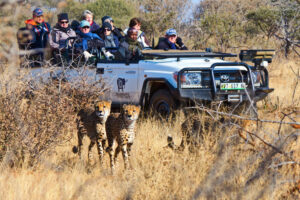
什麼是野生動植物旅遊?野生動物旅遊業是基於與非馴養(非人類)動物相遇的旅遊業。 這些相遇可能發生在動物的自然環境或人工飼養的環境中。 它包括歷史上被歸類為“非消耗性”的活動,例如觀看,攝影和進食,以及涉及殺死或捕捉動物的活動,特別是在陸地環境中的狩獵和在水生環境中的休閒捕魚。 野生動物旅遊可能涉及:固定地點的景點,旅行,與旅遊住宿相關的可用體驗,或者可能是獨立旅行者在無嚮導的情況下發生的。
What is wildlife tourism?
Wildlife tourism is tourism based on encounters with non-domesticated (non-human) animals. These encounters can occur in either the animals’ natural environment or in captivity. It includes activities historically classified as ‘non-consumptive’, such as viewing, photography and feeding, as well as those that involve killing or capturing animals, particularly hunting (in the terrestrial environment) and recreational fishing (in the aquatic environment). Wildlife tourism can entail: attractions at fixed sites, tours, experiences available in association with tourist accommodation, or it can occur as unguided encounters by independent travellers.
“旅遊業”是指政府和私營部門開展的活動的總和,這些活動可以塑造和滿足需求,並管理度假,商務旅行和其他旅行的後果(Pearce等,1998,p.xvi。)。 “遊客”是指除有薪工作以外的任何原因,離開家40公里或以上,至少住一晚的人(Harris and Howard 1996,p.88)。在本書中的某些情況下,我們使用更廣義的“訪客”一詞,指的是出於其他目的而在其住所以外的地方進行臨時旅行的人,而不是在所訪問的地點從事有償就業的人(Harris and Howard 1996,p。 162)。我們將“野生動物”的定義限制為動物(動物),以與旅遊業和公眾對該術語的普遍使用相吻合。 “動物”一詞在生物學意義上被定義為表示動物界的任何成員(人類除外)。因此,它不僅包括陸棲脊椎動物,例如哺乳動物,鳥類和蜥蜴,還包括通常生活在海洋或內陸水域中的水生脊椎動物,例如鴨嘴獸,魚類和烏龜。它還包括無脊椎動物,例如螢火蟲,蝴蝶,珊瑚和海星。野生動物不僅限於所涉國家/地區的動物(例如澳大利亞的袋鼠和us),還包括外來動物,無論是圈養還是有意或無意地引入自然環境(例如野豬和澳大利亞的駱駝)。 “非馴化”一詞比“野生”更為可取,因為目前尚不清楚後一術語是否適用於該物種或其環境(例如,動物園中的老虎是非馴化的物種,但有些人可能會辯稱它不再適用於該物種)。荒野)。 “野生動物旅遊”可以在多個層次上應用。由於許多旅遊體驗和產品都將野生生物作為旅行套餐的一個組成部分,因此它的應用變得很複雜。在最低層次上,野生生物旅遊是基於野生生物的旅遊體驗或產品的組成部分。在下一級別,它可以應用於旅遊產品。為方便起見,在這本書中,賞鯨之旅和包括野生動植物在內的生態旅遊均被視為野生動植物旅遊產品。
‘Tourism’ is the sum of government and private sector activities that shape and serve the needs and manage the consequences of holiday, business and other travel (Pearce et al. 1998, p.xvi.). A ‘tourist’ is a person who travels 40km or more away from their home for a period of at least one night, for any reason other than paid employment (Harris and Howard 1996, p.88). In some cases in this book, we use the more general term ‘visitor’ to mean a person who undertakes temporary travel outside their home to another location for any purpose other than engaging in paid employment in the location visited (Harris and Howard 1996, p. 162).
We restrict our definition of ‘wildlife’ to fauna (animals), to coincide with general use of the term by the tourism industry and public. The term ‘animal’ is defined in the biological sense to mean any member of the Kingdom Animalia (except humans). It thus includes not only land- dwelling vertebrates such as mammals, birds and lizards, but also aquatic vertebrates that usually live in the sea or inland waters, such as platypus, fish and turtles. It also includes invertebrates such as glow-worms, butterflies, corals and starfish. Wildlife is not restricted to animals that are native to the country in question (such as kangaroos and emus in Australia) but also includes exotic animals, whether held in captivity, or introduced into the natural environment either deliberately or accidentally (such as feral pigs and camels in Australia). The term ‘non-domesticated’ is preferred to ‘wild’ because it is unclear whether the latter term applies to the species or its setting (e.g. a tiger in a zoo is a non-domesticated species, but some might argue it is no longer wild).
‘Wildlife tourism’ can be applied at a number of hierarchical scales. Its application is complicated by the fact that many tourism experiences and products feature wildlife as only one component of a travel package. At the lowest hierarchical level, wildlife tourism is that component of a tourism experience or product that is based on wildlife. At the next level, it can be applied to tourism products. For convenience in this book, a whale watching tour and an ecotour that includes wildlife are both considered wildlife tourism products.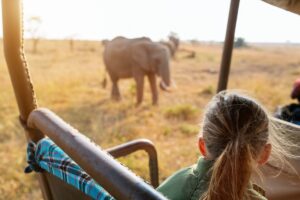
文/ Karen Higginbottom
圖/Website Resource
























